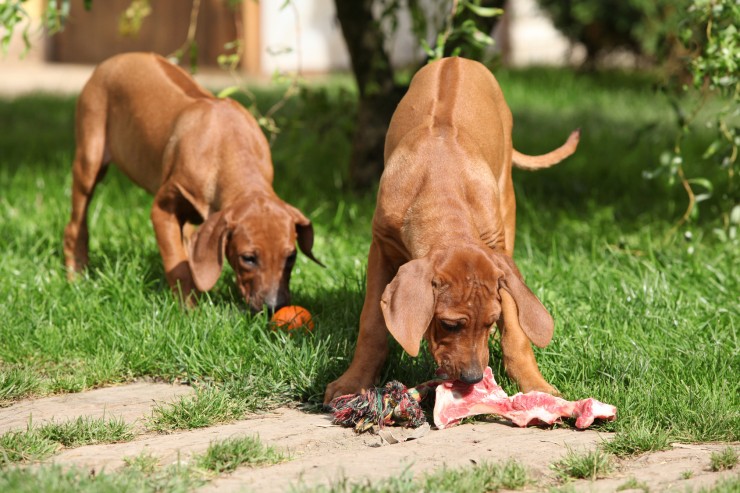
We’ve all heard, read about or even witnessed a vicious dog attack on a person at some time. Unfortunately, many times it is a child who is the victim, which makes it even more tragic. What causes these attacks, can they be prevented and what if you adopt a dog who has spent his life chained up? Is there hope?
One Cause of Dog Attacks
There are many reasons why a dog attacks. The first scenario that comes to mind is an attack by a chained up dog. Dogs are social animals and have many of the same emotions people have. To leave a dog of any age chained to a tree, doghouse, fence or other object can be compared to isolating a human from contact with other humans. Just like with a human, after a period of time of being isolated and restricted in movement, the normal behavior and temperament of a dog can change for the worse. A dog may claim his small space as his own and challenge anyone who comes within his reach, protecting what little he has. He will become psychologically damaged if left this way for a long period of time.
Another reason a chained up dog may attack is out of fear. A dog reacts to fear by either fight or flight. Since flight is taken away from him by the chain, the only option left is to fight. If he feels threatened by someone approaching and he can’t get away, he will probably bite if that person gets within reach.
It is a natural inborn trait of any dog to want to migrate, moving from one place to another, whether it is by walking with their person or traveling on their own excursions. They need physical activity to stay sane and balanced. A dog left unattended for great lengths of time on a chain does not get this badly needed exercise and will try to find other outlets for the unreleased energy. He may dig or chew up anything within reach. He may also fiercely guard his area, barking and lunging, hoping to break free of his bonds, possibly damaging his throat in the process. Another danger is that the collar can, over time, become embedded in the skin of his neck if neglected. The pain caused by this scenario is enough in itself to cause a dog to become aggressive.
Preventing a Dog Attack
In this type of situation, the obvious way to prevent a dog attack is by staying out of reach of any strange dog attached to a chain. Children should be kept away from ANY dog chained up, even if it is a family dog, but hopefully you wouldn’t chain up a family dog. Any chained up dog may view a small child as a threat to his space, perhaps seeing the child as just another small animal to compete with.
It is unfortunate that any dog should ever have to be kept tied up at all. It goes against their very nature – mentally, physically, socially and emotionally. The BEST way to prevent a dog attack by a chained up dog is to never chain it up in the first place. The dog that is now aggressive after years on a chain could have been a wonderful loving totally trust-worthy dog if not for the isolation and confinement he was condemned to.
Can Chained Up Dogs Be Rehabilitated?
I believe these dogs can be rehabilitated, but it has to start with getting them off the chain. If you know of a dog who is always out on a chain and doesn’t seem to be getting much attention, you might try to talk to the owners about putting up a fence and even volunteer to help or have an animal control officer talk to them. Sometimes it is even the case that the owners don’t want the dog but don’t know what else to do with him. They might be willing to relinquish the dog to you or an animal control officer. You may even offer to walk the dog for them if it is not an aggressive dog. Maybe the owners are elderly and unable to give the dog the exercise he needs. Not every chained up dog will turn vicious, but it is still a cruel life for any dog.
If you do acquire a dog who has spent most of his life tied to a tree or other object, there is a chance the dog may exhibit some behavior issues, such as anxiety at being left alone. Food aggression may be another issue. This could take a lot of work to overcome, starting with having the dog work for its food, such as sitting on command. Holding the bowl and feeding the new dog by hand is another step in overcoming food aggression. This should not be done by children, though. Patience is important, keeping in mind where this dog has come from and the lack of social interaction he has had.
Something you might want to try in your rehabilitation efforts, especially with an anxiety issue, is an anxiety wrap for dogs, which is a type of snug body wrap. It works kind of like a swaddling blanket for an anxious baby, putting pressure on pressure points that tend to calm the dog and give him a sense of security. This may help with panic attacks your new dog may have due to any psychological damage from years of being on the end of a chain.
You will also want to get the dog into an obedience class and out for daily walks, starting on short walks and getting longer. Remember, this dog has only lived within a space of a few feet and is probably not in good physical or mental shape. Be patient and consistent with any training efforts and you will be rewarded in the end with a wonderful grateful companion.
 The Evolution Of The Dog From Wild To Domestic
The Evolution Of
The Evolution Of The Dog From Wild To Domestic
The Evolution Of
 4 Glorious Irish Dogs Breeds
4 Glorious Irish
4 Glorious Irish Dogs Breeds
4 Glorious Irish
 Four Feeding Suggestions For Dogs Given The Barf Diet
Four Feeding Sugg
Four Feeding Suggestions For Dogs Given The Barf Diet
Four Feeding Sugg
 Five Smart New Year’s Resolutions For Cat Owners
Five Smart New Ye
Five Smart New Year’s Resolutions For Cat Owners
Five Smart New Ye
 Training Your Labrador Retriever- Canine Health
Everyone loves their dog. Sometimes behavior problems c
Training Your Labrador Retriever- Canine Health
Everyone loves their dog. Sometimes behavior problems c
Copyright © 2005-2016 Pet Information All Rights Reserved
Contact us: www162date@outlook.com